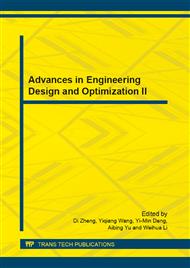p.356
p.360
p.365
p.369
p.374
p.379
p.383
p.387
p.392
Study on Simulation of Fuel Economy of Hybrid Electric Vehicle
Abstract:
Fuel economy is one of the important factors for hybrid electronic vehicle (HEV), which would has great impact on fabrication and sale of HEV. A HEV should be designed to achieve best power performance and high fuel economy. In this paper, the fuel economy of HEVs, both parallel and serial, have been investigated by simulation approach. INSIGHT which is produced by HONDA Corporation has been employed as an example of parallel HEV (PHEV). The power parameters of serial HEV (SHEV) have been set according to references. After that, the simulation models for both PHEV and SHEV have been established. Three kinds of work conditions including UDDS, HWFET and ECE-EUDC have been simulated with software ADVISOR 2002. The conclusions have been reached by analyzing the simulation results, which indicate that PHEV has difference fuel economy performance from SHEV. PHEV is suitable for working at high speed condition, whereas SHEV is satisfactory to low speed and frequently startup case, for example, running in downtown.
Info:
Periodical:
Pages:
374-378
Citation:
Online since:
September 2011
Authors:
Keywords:
Price:
Сopyright:
© 2012 Trans Tech Publications Ltd. All Rights Reserved
Share:
Citation:


